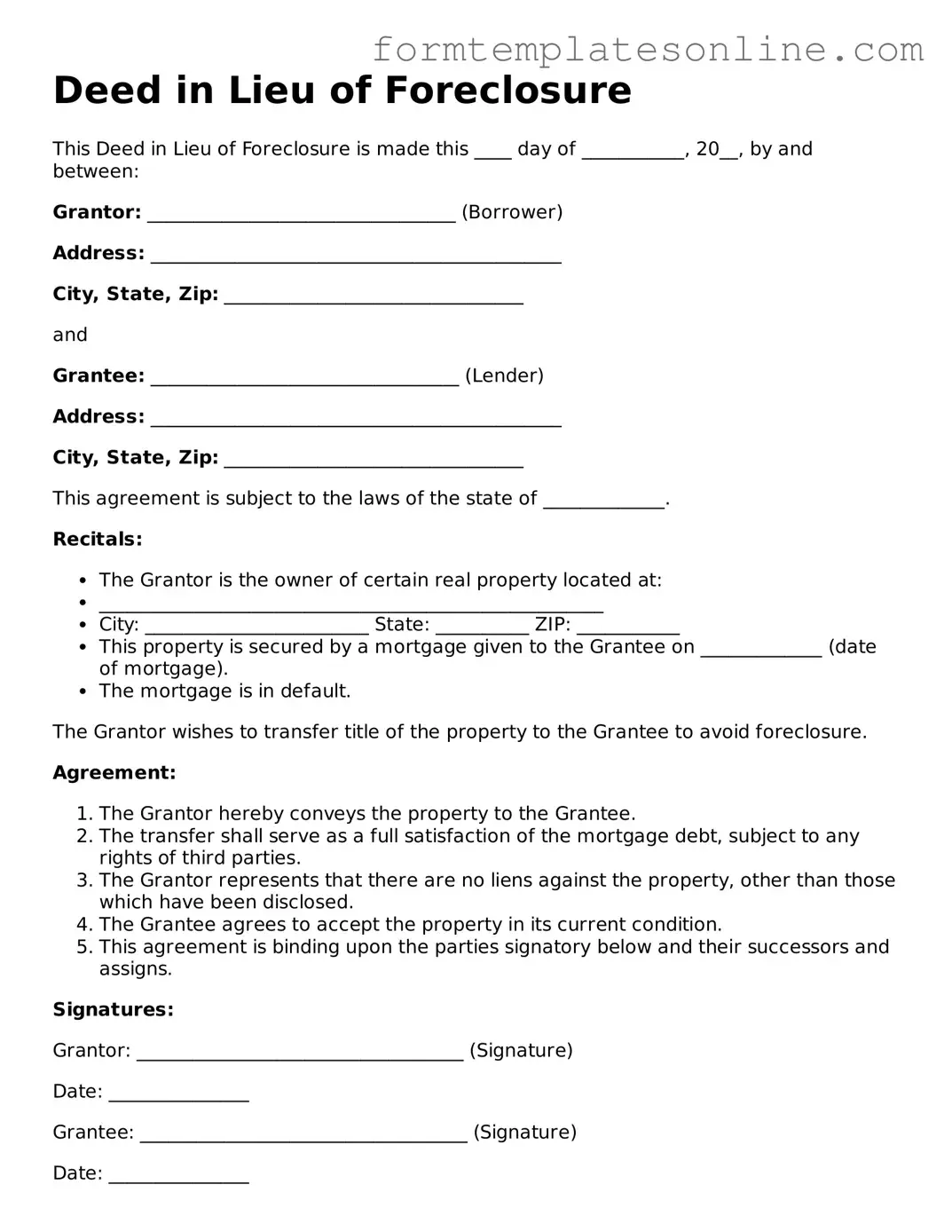Deed in Lieu of Foreclosure
This Deed in Lieu of Foreclosure is made this ____ day of ___________, 20__, by and between:
Grantor: _________________________________ (Borrower)
Address: ____________________________________________
City, State, Zip: ________________________________
and
Grantee: _________________________________ (Lender)
Address: ____________________________________________
City, State, Zip: ________________________________
This agreement is subject to the laws of the state of _____________.
Recitals:
- The Grantor is the owner of certain real property located at:
- ______________________________________________________
- City: ________________________ State: __________ ZIP: ___________
- This property is secured by a mortgage given to the Grantee on _____________ (date of mortgage).
- The mortgage is in default.
The Grantor wishes to transfer title of the property to the Grantee to avoid foreclosure.
Agreement:
- The Grantor hereby conveys the property to the Grantee.
- The transfer shall serve as a full satisfaction of the mortgage debt, subject to any rights of third parties.
- The Grantor represents that there are no liens against the property, other than those which have been disclosed.
- The Grantee agrees to accept the property in its current condition.
- This agreement is binding upon the parties signatory below and their successors and assigns.
Signatures:
Grantor: ___________________________________ (Signature)
Date: _______________
Grantee: ___________________________________ (Signature)
Date: _______________
Witness: ___________________________________ (Signature)
Date: _______________
Notary Public:
State of ________________
County of _______________
On this ____ day of ___________, 20__, before me, a Notary Public, personally appeared __________________, known to me (or proved to me on the basis of satisfactory evidence) to be the person(s) whose name(s) is/are subscribed to this instrument and acknowledged that he/she/they executed it.
Notary Signature: ________________________________
My Commission Expires: ______________________
